Interview with Janice Koler-Matznick,
President of the New Guinea Singing Dog Conservation Society
Since its establishment in 1991, Wild Spirit Wolf Sanctuary as a nonprofit organization has become synonymous with “wolf rescue.” While it is true that the bulk of the animals we care for are wolves and wolf-dogs, Wild Spirit Wolf Sanctuary also rescues and provides lifetime care and support to other related canid species, including foxes, coyotes, Australian dingoes, and the lesser known New Guinea singing dogs.

Presently, five New Guinea singing dogs (a.k.a. Singers) call Wild Spirit Wolf Sanctuary home. One of the rarest wild canid species in the world, Singers hail from the tropical island of Papua New Guinea where they were first discovered by western civilization in the 1950s. Throughout the past 60+ years, New Guinea singing dogs have remained a mysterious specimen. It is not easy to study the species in its natural ecosystem, after all, and the wild population is minimal with an estimated 2,000 or so individuals on the island.
What has been observed and learned about New Guinea singing dogs comes from studying the captive population. Unfortunately, captive wild animals cannot supply researchers with everything to know about the species, for instance, diet and territory size. “Other than habitation to people and the captive environment, as long as the animals are not specifically selected for any trait, the basic behaviors are not changed. Their head toss, propensity to perch as high as possible, climb trees, do cheek rub scent marking are undoubtedly the same in the wild Singers, but we just can’t say for sure until we find wild ones and can observe them,” (Janice Koler-Matznick). Because of this reality, Singers remain a modern day animal mystery.
Always aiming to improve our Animal Care Program and to expand our own knowledge of the species we care for at Wild Spirit Wolf Sanctuary, Jared Kain-Woods, Animal Care Specialist, interviews Janice Koler-Matznick, President of the New Guinea Singing Dog Conservation Society.
Let’s meet the Singers!
Q. For our readers, can you please provide a brief introduction to the New Guinea Singing Dog Conservation Society (NGSDCS)?
A. The New Guinea Singing Dog Conservation Society (NGSDCS) has been working for over 20 years to bring attention, both scientific and public, to this ancient dog. Our mission is to promote research, try to preserve the genetic diversity of the captive population, educate owners and potential owners about Singers, and maintain a studbook. [A studbook is a record of the lineage of a wild animal bred in captivity.]
Q. When was the NGSDCS established, and what is the organization’s mission?
A. It was started in 1996 and incorporated as a 501(c)(3) non-profit organization a couple years later. The mission is, as taken from the website, www.ngsdconservation.org:
- To promote health and genetic diversity among captive purebred New Guinea singing dogs
- To advance the conservation of wild New Guinea singing dogs and their habitat, in cooperation with the New Guinea people
- To encourage scientific study and public education about these primitive dogs
Q. Can you describe your role as the NGSDCS President for our readers and what your position consists of?
A. As President, I encourage our volunteers to perform tasks related to our mission, especially over the last three years to advise and organize field research in Papua New Guinea.
Q. Since the NGSDCS was founded, have you always held an active role?
A. Yes, I’ve always been an officer in some capacity and my self-assigned task has been to encourage scientists in many fields, such as genetics, to include Singers in their research. I am a biologist specializing in dog behavior, and Singers are my life’s main work.
Q. If you do not mind, would you please describe what it was like to found the NGSDCS?
A. Before I started the Society there was no organized group devoted to Singers. Since then other groups have sprung up, failed to accomplish anything to advance the Singer cause, and faded away. In the beginning, it was difficult to even find and communicate with Singer owners to bring them together, as computers and the Internet were just becoming common. For a long time, I did most of the tasks to keep the group going, but over the years others have volunteered to serve, and now we have a great group of officers and Directors dedicated to these wonderful dingoes, not for their benefit but just for the dogs.
Q. Turning our attention to New Guinea singing dogs, in the canid community there seems to be some discrepancy as to how to best classify New Guinea singing dogs taxonomically. What is the NGSDCS’s policy on how to classify them? Is this policy based on any newer research?
A. The Society doesn’t have a unified position on the scientific name (nomenclature). I used the original name given to the Singers in 1956, Canis hallstromi, in the first two science journal articles I authored. Using this name is valid if you believe it is a species separate from other dogs. I did this to emphasize how unique they are.
Most scientists are far from convinced the Singer, and the closely related Australian (AU) dingo, is anything but a feral dog (domesticated dog returned to a wild home). I believe if the dingoes are not “dogs” but another form of creature like a bird or fish, they have enough unique characteristics different from domestic dogs they would be recognized as a separate species.
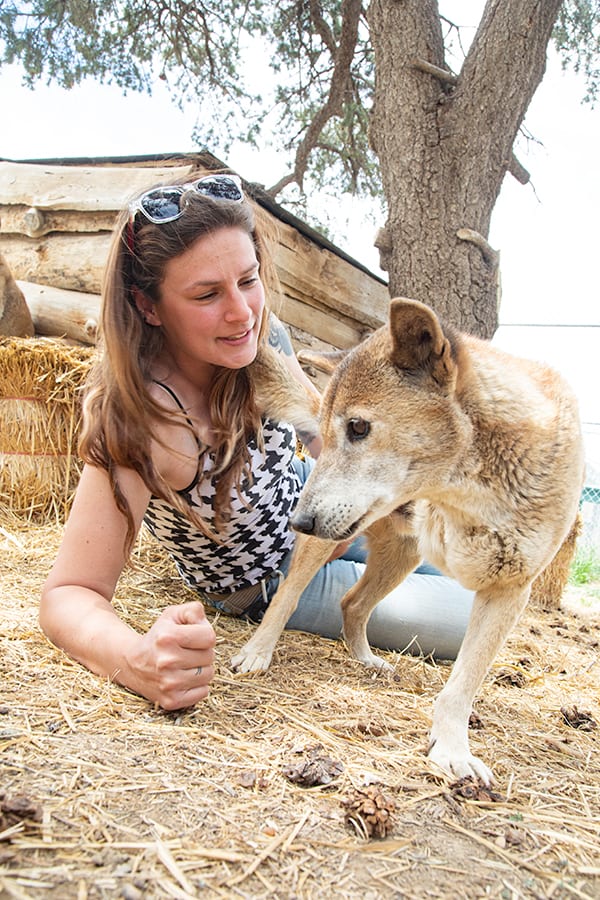
The term “dog” used as “domestic dog,” with the scientific name Canis familiaris, to most scientists means something unnatural, created by humans or association with humans and therefore not a “good” species. I believe after much research that the dingoes are dogs, but not feral domestic dogs. My hypothesis is that the dog is a naturally evolved wild species that everywhere but Australia and Papua New Guinea underwent domestication and became dependent on humans.
The dingoes were taken to their current ranges at least 5,000 years ago (and probably much longer ago) in a non-domesticated state. This is what allowed them to resume the niche of wild predator, living independent of humans. Feral dogs everywhere else in the world live off of human waste, garbage dumps, etc., with a very reduced ability to hunt.
The taxonomy of the dingoes, where they fit into the Genus Canis, which includes wolves, jackals and coyotes, is clear from their genetics and their skull shape: They are dogs. Therefore, I believe Singers should correctly, by scientific standards, be named Canis familiaris dingo for the Australian dingo and Canis familiaris hallstromi for the New Guinea singing dog. This means that both are recognizable subspecies of the common dog, but are unique populations.
A subspecies definition is a population of a more widespread species that has been isolated by some barrier (i.e., river, ocean, mountains) from the main population long enough to develop unique traits that can identify them as belonging to that subspecies. It is unfortunate that the name Canis familiaris has been tainted by the unproven idea that all dogs were once domesticated, as it has been a real struggle to get the dingoes proper scientific attention.
Q. If you do not mind, can you please share the newest findings on New Guinea singing dogs with our readers? In particular, has anything new come to light in recent months that would help the appropriate organizations to best care for Singers and, furthermore, aid in the public’s education?
A. In the last two years, the biggest revelations have come through genetic analysis of the dingoes compared to domestic dogs. Dr. Kylie Cairns, the Australian dingo geneticist, and her colleagues have concluded that much of the AU dingo population descended from the New Guinea dingo. This means that the Singers are from a more ancient population that spread from Papua New Guinea into Australia where they evolved into a larger form to hunt on the open plains rather than mountains and forests, as in Papua New Guinea.
As for best caring for Singers, the NGSDCS is trying to organize health records from many Singers into a database that will tell us more. We do know that captive Singers are prone to pancreatitis and several have developed diabetes. We think this may be diet-related. Once we have the data organized, and can correlate disease with life factors such as diet and exercise, we will approach a veterinarian that is researching endocrine problems in dogs and ask if they would be willing to study Singers.
Q. What has been the average life-span observed for both wild and captive New Guinea singing dogs? Are there any notable, common health issues that afflict either population?
A. Nothing conclusive is known about the wild population. However, there are a couple of people trying to do field research to locate wild Singers, including a native PhD student, Ms. Rose Singadan, whose PhD research at the University of Papua New Guinea is being supported by the NGSDCS, but so far no luck. Captive Singers regularly live to about 16-years old. Of course, no wild living canid lives that long.
Other than the diseases mentioned above, we have noted that some significant minority of Singers have congenital heart defects. The captive Singers are very inbred, so they now are all related genetically as close as siblings. Therefore, inherited problems are bound to become more common if the Singers are not bred with attention to health and genetic diversity. This is what the NGSDCS is attempting with an effort to get all breeding Singers into a pedigree database. Hopefully, within a few years, we will be able to add new wild specimens. Elderly Singers develop neurological symptoms not usually seen in other dogs. They pace around in a repetitive manner and become more reactive to touch.
Q. Finally, has anything been found in current research to give these animals the best chance at a healthier and longer life?
A. No, not really. They seem to do well on a variety of diets. Most people add some raw meat to a quality kibble because they are adapted to being a wild predator that consumes mostly meat. The Singers seem to prefer poultry to red meat. They also need room to exercise, climb, and jump.
Q. In the opinion of the NGSDCS, what are the best resources for new research on New Guinea singing dogs? Are there any particular universities or zoos that have been valuable resources? If applicable, what is required for access to said research?
A. No university program has ever studied Singers, other than within the field of genetics. All behavior and information gathered about New Guinea singing dogs has been done by the NGSDCS.
There is one behavior researcher at the Dog Lab at Hunter College who has recently requested videos to study Singer social behavior, and I will be supplying her with video of Singers from birth. There are occasional researchers in Australia who compare Singer skulls to other canids, but only a few over the years.
Q. It has been shared that New Guinea singing dogs have been observed eating fruit. Is there any evidence to support that Singers are omnivorous versus carnivorous?
A. All canids, but especially foxes, jackals, and coyotes, are somewhat omnivorous and will eat ripe, sweet fruits. I have not seen any reports of Singers choosing to eat fruit, other than as a novelty treat provided by caretakers (as opposed, for instance, to eating directly from a bush or choosing to pick up under a tree), and I never offered mine any so I have no personal knowledge of this. But since this is common in Canis I would not be surprised.
Q. Genetically speaking, is there much of a difference between the “Highland” Singing Dog that still inhabits Papua New Guinea and the captive-bred animal found in the Americas?
A. The genetics of the “Highland Wild Dog” that was located around a huge mine in West Papua New Guinea a couple years ago are yet to be published, so we don’t know about them. The Papuan New Guinea singing dogs in the captive population came from a few specimens 60 years ago, so they represent a very small sample of the genetic diversity present in the wild population. Yet, all the comparative genetics done on samples of the captive population indicates their genome is unique from both the Australian dingo and domestic dogs. So the captive population represents a tiny bit of a much more varied whole.
Q. According to the NGSDCS, what would be an ideal wild population of New Guinea singing dogs? Can you share with us what efforts are presently being made to help increase the wild New Guinea singing dog population?
A. Ms. Singadan has sampled free ranging dogs, aboriginal village dogs, in the forested areas pretty high on Mt. Wilhelm in Papua New Guinea, and has found nothing like a Singer. Likely, then, these wild Singers must exist only at higher elevations, in the subalpine and alpine zones, where people and their dogs do not go. We assume in those zones, Singers are present throughout the long mountain chain that runs the full length of the island, the world’s second largest island. But, we just don’t know how many there are.
Research on the island is extremely difficult and dangerous (at those elevations, a doctor is many days walk away, there are no roads, and supplies can only be replenished by air drop). Rose will be going back to the field in a few months, at a higher point near a grassland, to set up trail cameras. Dr. Ben Allen, the dingo researcher in Australia who we sent over last year to help on Ms. Singadan’s last field trip, is hoping to make a trip next year to the higher altitude of Mt. Wilhelm. Ms. Singadan is educating Highland villagers about the Singers and their importance as top predator to the New Guinea ecology.
Q. Regarding the captive population, how do you promote genetic diversity amongst a population that descends from such a small group?
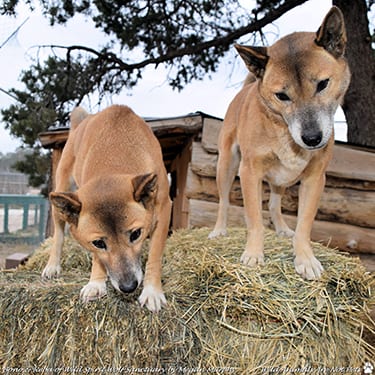
A. We have kept a studbook for 25 years, and choose the least related mates possible. For the Singers, this usually means no common ancestors in the last two generations. We only have a few breeding specimens left. Breeding Singers is not like breeding domestic dogs where the female can just be taken to a distant mate, bred for a day or so, and taken home. Females are very choosy and so must have time, at least two weeks, to become familiar with a male. Most pet owners are not able to keep a pair, partly because during breeding season if you don’t want a litter the two must be kept separate and they howl back and forth continuously, which is not neighbor-friendly!
We are planning a breeding for this year. The male’s owner has consented to the female’s owner driving across two states to pick him up and keep him for the duration, then driving him back. The NGSDCS is also asking people who are neutering their pet males to donate the testicles to the Society to build a frozen sperm bank.
Q. What might Wild Spirit Wolf Sanctuary be able to do to assist either or both the wild and captive populations of New Guinea singing dogs? As our readers know, the sanctuary dedicates much of our time towards educational efforts, and we always aim to increase our knowledge and understanding that we in turn can share with the public.
A. Wild Spirit Wolf Sanctuary can best help the New Guinea singing dogs by educating the public about them, especially the importance of preserving this remnant of ancient wild dog in its natural habitat.
Thank you so much, Janice, for your time and expertise!
Dear Howling Supporters, I hope you found the information about New Guinea singing dogs interesting! If you have any questions concerning Janice’s answers, please do not hesitate to comment below. The Wild Spirit Wolf Sanctuary Team will be sure to follow-up for clarification and more details, if desired.
As stated in the beginning, Wild Spirit Wolf Sanctuary currently cares for 5 New Guinea singing dogs: Reba, Bono, Princess, Foxy, Bowie.
Our Singers are some of the most adored rescues on-site by team members and visitors alike. Despite being naturally skittish and shy as wild animals, the New Guinea singing dogs are some of our more social-with-people animals (aside from Ms. Foxy). Get to know them, and fall in love!
Please note, too, while the New Guinea Singing Dog Conservation Society actively supports and participates in breeding programs to increase the health and diversity of the captive Singer population in conjunction with their research efforts, Wild Spirit Wolf Sanctuary does not support, recommend, or condone having New Guinea singing dogs as pets.





Can you sponsor one of our five singing dogs?
Visit our online giftshop and select one of our amazing rescues to sponsor! You can choose to receive a sponsorship certificate featuring your animal, and/or a 3×4″ magnet, like the ones pictured above! Thanks so much for your kindness and support!

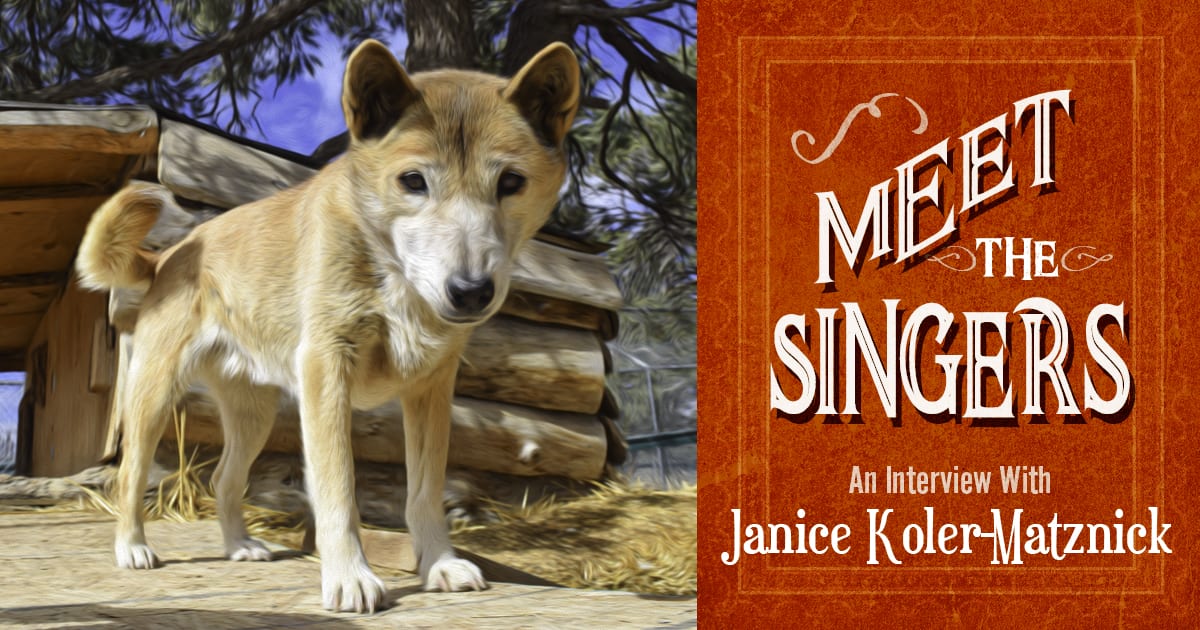
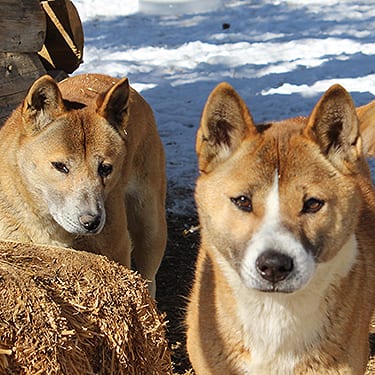
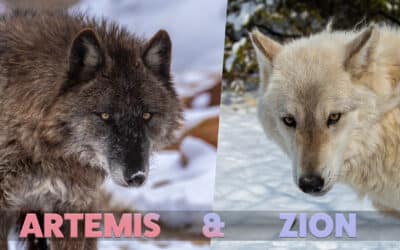

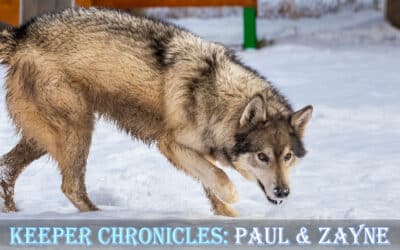
0 Comments